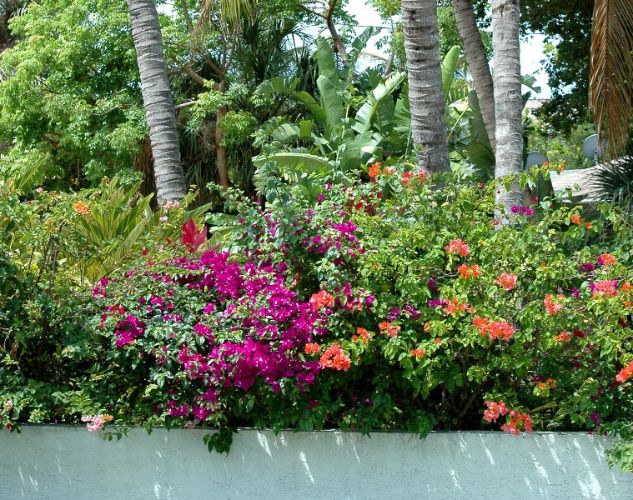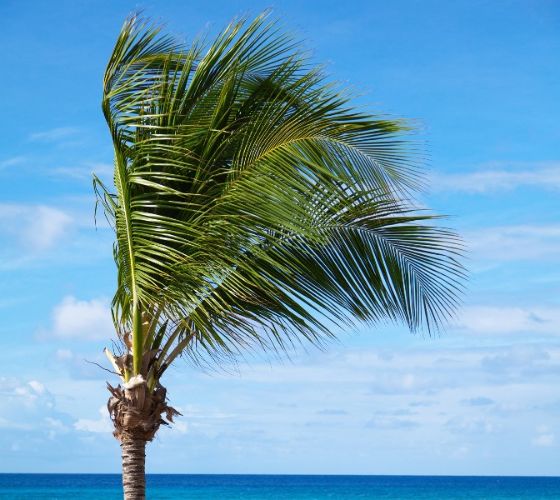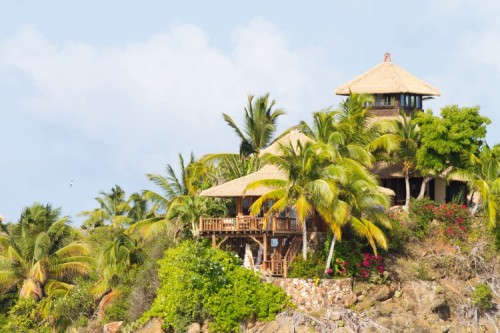[dropcap]F[/dropcap]allen trees contribute immensely to the destruction potential of our Atlantic Caribbean hurricane season – June 1 till November 30. Dead, damaged, or cracked limbs, heavy and low-hanging boughs, and branches that overhang your property are all would-be hazards, but ones that can be eliminated with proper planning and care.
Scissor Happy
The combination of a pair of shears and abundant foliage often inspires in the most level-headed a fierce desire to overdo it. I know it sounds boring and preachy, but pruning really is a learned skill and a poor job is likely to do more harm than good.
Not only are the results often aesthetically offensive, but an incorrectly pruned tree can be far more vulnerable to high winds and heavy weather. Professional pruners or at the very least an experienced hand will assess their trees and trim selectively to allow easy passage of wind, promote sturdy and healthy branch angles, and encourage a low and stable centre of gravity – young trees need a different pruning program to mature trees and it is aspects like this that should be acted out accordingly.
Correct pruning includes the removal of dead, sickly, and damaged wood, fruits, pods and coconuts, and water sprouts. The latter are shoots that often grow from previously pruned areas on a tree. Their structure is not as strong as natural tree growth, and therefore they are often predisposed to ailments and insects.
Heinous pruning crimes include ‘topping’, ‘over-lifting’, and ‘hatracking’. The first offense refers to the removal of the tree canopy including branches that may be vital to the tree’s health and wellbeing. When this tree grows back, it runs the risk of becoming excessively heavy.
An ‘over-lifted’ tree is one that has had the lower half of its upper section removed, making it top heavy and therefore susceptible to toppling in high winds.
‘Hatracking’ is a particularly savage offense whereby a tree has been so brutally chopped, that it is left with no more than a few lone branches.
These trimming transgressions are often seen in the backyards of even the most well-meaning gardeners, and can have disastrous results. Once your trees are beautifully trimmed and hurricane-ready, cuttings must be appropriately disposed of; tree limbs and stumps of wood left unattended can become perilous projectiles during a storm.
Smart Selection
While, of course, a violent enough storm can bring down any tree, there are a few strapping specimens that have greater resilience.
It stands to reason that slow-growing native trees, particularly those with broad branches, deep root systems, small leaves and low centres of gravity seem to hold their own better in stormy weather.
Stalwart palms include the Sabal (Sabal palmetto), Pygmy Date (Phoenix roebelenii), Foxtail (Wodyetia bifurcata), and Solitaire (Ptychosperma elegans). Tough trees include the Gumbo Limbo (Bursera simaruba), the Ironwood (Krugiodendron ferreum), the Pigeon Plum (Coccoloba diversifolia), the Pitch Apple or Autograph (Clusia rosea), the Buttonwood (Conocarpus erectus), the Geiger (Cordia sebestena), and the Sea Grape (Coccoloba uvifera). Happily all these mentioned are readily available in well-stocked island nurseries.
Vigilance over more delicate species is wise – these trees either have brittle wood prone to fracture in even moderate winds or shallow root systems that are easily dislodged from the earth. Be wary of species of Ficus and Tabebuia, as well as Frangipani (Plumeria), and the Queen Palm (Syagrus romanzoffiana ).
Planting trees in a copse with sufficient shrubbery can help to redirect wind in an upwards direction. This positions what is known as the “point of overturning pressure” farther away from the root zone and towards a more supple area of the tree.
In addition to making prudent planting material decisions, there are a few other things you can do during the year to help minimize damage. One is to water deeply during dry spells. This reduces stress and encourages a deep, strong root system.
Another is to ensure that use of weed whackers and lawn mowers are distant from ‘attacking’ precious tree trunks. A damaged trunk is an invitation to pests and diseases that will rob your tree of vitality.
Make a habit of pruning your trees during the winter months. This is when your trees are not actively growing and do not need protection from sun burn. No hurricane season arrives without a measure of concern and caution, and while we can neither predict nor control what Mother Nature dictates this year, we can make responsible decisions in readying our ‘growing concerns’ for the possible onslaught.
[ts_fab]







